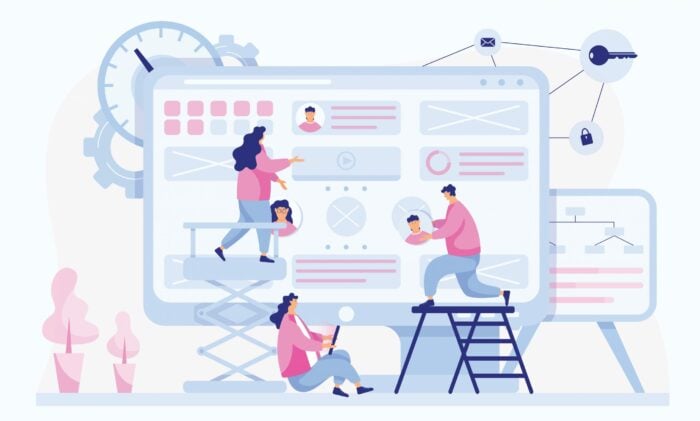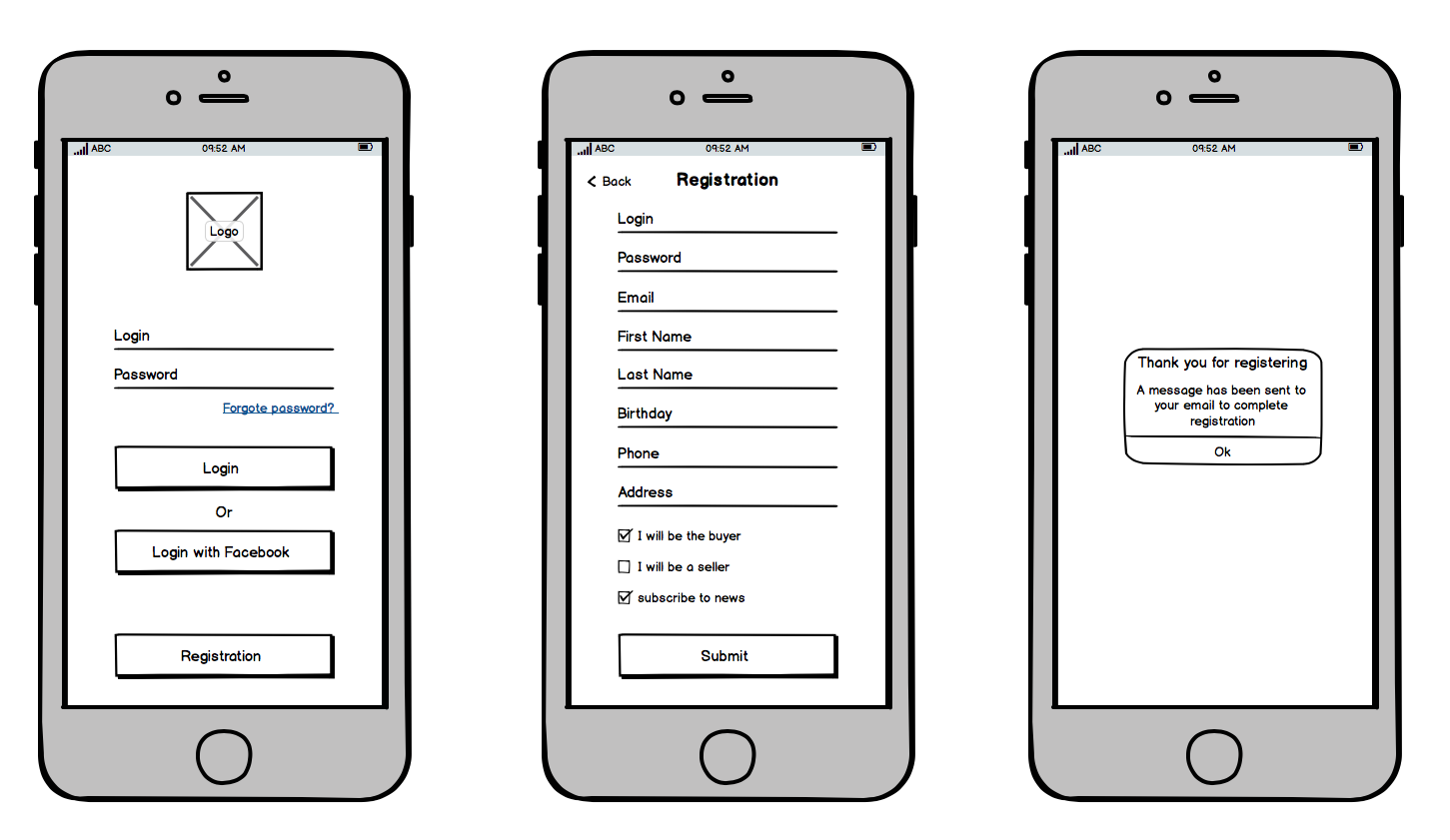Free UX Design Course
Dive into UX design with our free starter course. Transform your creative ideas into user-friendly solutions.
The best design is the design that knows its users. When it comes to creating UX designs that feel easy, functional, and intuitive, teams should aim to create experiences with their ideal audience in mind. It’s more than just anticipating a user’s needs and pain points, it’s actually more about understanding who your specific user is, rather than creating a universal design that appeals to the masses.
According to Thomas Griffin, co-founder and president of OptinMonster, “generating sales and engagement on your website boils down to one thing: how well you know your target audience.” He explains that the best way to know your target audience is to create it via user personas.
This is where UX designers can actively make an impact: user personas are an essential step to optimizing usability. UX designers rely on user personas to build better products and drive long-term product success. In this blog, we will break down what a user persona is and why they’re important—as well as provide advice on how to build your own.
Related Read: What is UX Design?
What Is a User Persona?
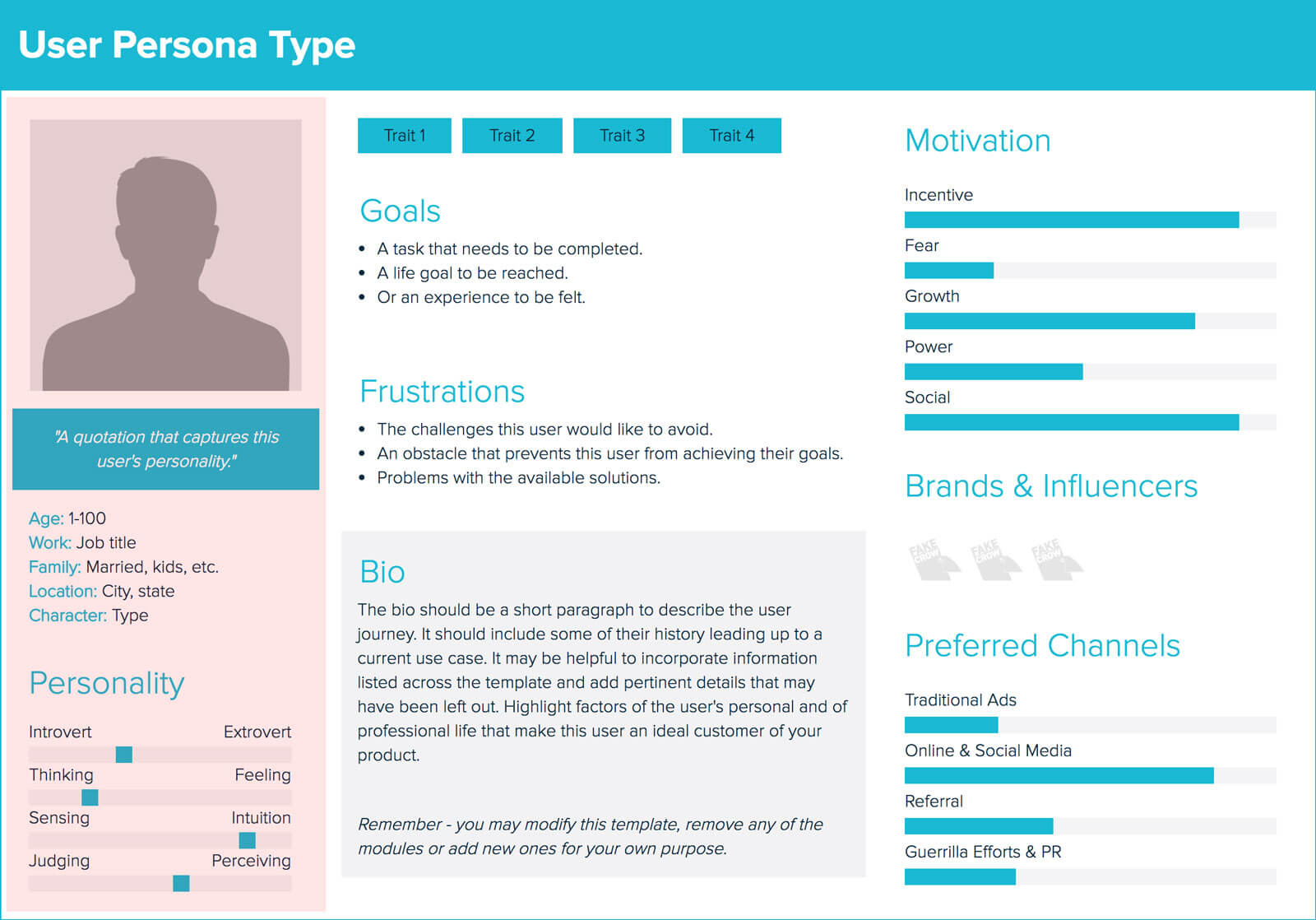
User personas go by many different names. You might know them as a buyer persona, customer persona, or customer avatar, but regardless of what you choose to name them, they all serve to achieve the same result. “Customer personas are semi-fictional profiles that summarize each segment of your audience,” explained Griffin.
User personas will identify the user’s following:
- Goals
- Product or service needs
- Background
- Knowledge and attitude
The best customer personas will help you understand pain points, create interactive and personalized experiences, and allow you to test new market ideas easily. UX designers utilize this fictional information to create functional designs that anticipate the realistic needs and responses of users.
Get To Know Other Design Students
Reyna Martinez
Associate UX Designer at ServiceMax
Jiyoung An
Product Designer at Nav Technologies
Bibi Tanjasiri
Product Designer at Hatch
Why Are User Personas Important?
When it comes to design, it’s not about what you’re designing, it’s about who you’re designing for. Developing user personas is the first step to understanding your audience.
When you design with user personas in mind, you can effectively and efficiently create a user experience that is best for your audience and directly impact the success of your product. Adobe clearly outlines how implementing a user persona design model can affect the decision-making process much easier with this example:
“[Having specific personas] can also help settle arguments around design decisions—instead of saying, ‘I think the ‘Send’ button is too small,’ a designer might say, ‘Since our primary persona, Carolyn, always use mobile on a go, we need to design bigger tap targets in our app to minimize the interaction cost.’”
On top of improving decision-making, user personas also create empathy for the user. You’re not just creating a persona, you’re developing the necessary tools to understand the psychology of each person who will use your product. Creating a persona provides the framework to communicate with the ideal target audience and produce the best outcomes possible.
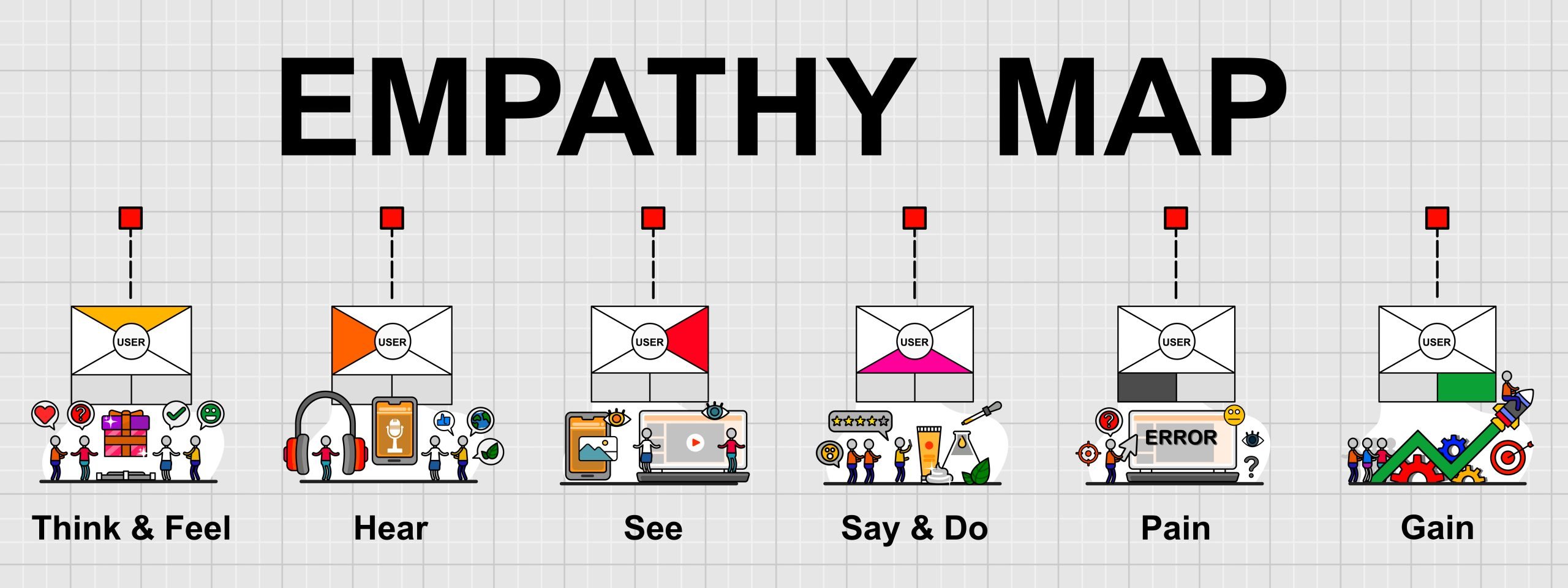
How To Create User Personas: 3 Key Questions To Take Into Account
Now that we understand why we need user personas, it’s time to create them. Start by answering three key questions about your user.
1. Who Are They?
Use this question to dig into your user persona’s personal life by asking a series of questions that help you understand the basic elements of your user persona. You’ll likely be able to answer these questions based on existing data from user demographics, but if you’re starting from scratch or building personas for a new audience you want to design for, ask the following questions:
- Are they a man, woman, nonbinary, etc?
- What is their sexual orientation?
- How old are they?
- Are they single or married?
- What is their education level?
- Where do they live?
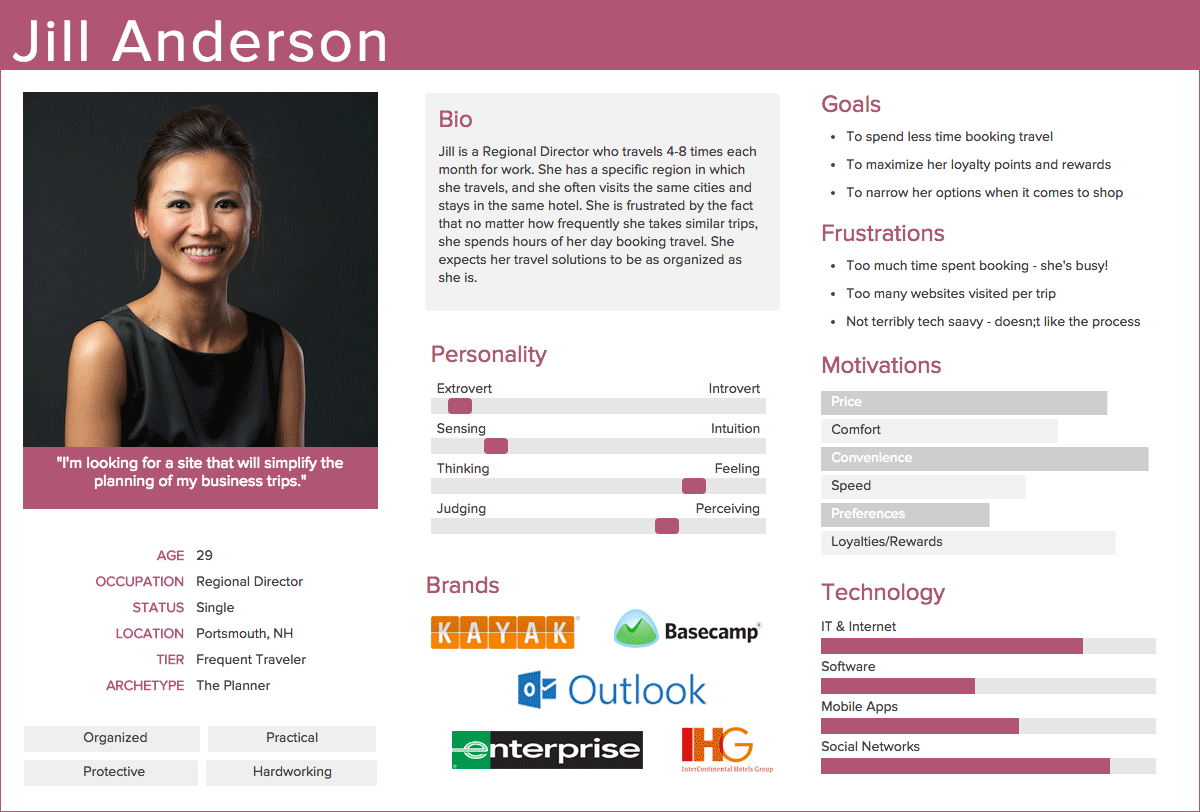
One trick to help humanize these personas and make them easier to identify is to give them a name and flesh out a narrative. For example, you might say, “Rachel is a college-educated, 26-year-old woman, living in Brooklyn with roommates.”
2. What Do They Do?
Flesh out your user persona’s goals, aspirations, and professional life.
- Where do they work?
- What are their hobbies and interests?
- Where do they see themselves in five years?
Answering these questions informs the design team how much this person makes each year, can help inform their habits and get a better sense of where this person is spending the majority of their time, whether it’s at home, the office, or on the go.
3. How Do They Think?
Creating a psychographic outline of each persona will help UX designers understand what motivates their audience and will inform how that person will interact with the product. Building this part of the user persona allows you to get inside their mind and understand their behaviors. This will especially affect the way they’ll ultimately connect with your design: whether it’s via tablet, phone, or on the big screen, the logistics around how your personas will consume media should be kept top-of-mind. Here are a few ideas of questions to ask about your persona to get a better sense of their mentality, but keep in mind you should tailor your questions to your product:
- Are they risk-takers?
- Are they more likely to buy new or thrift?
- Do they enjoy trying new things?
- Are they extroverted or introverted?
Use the other elements of your profile to inform these psychographic assumptions. For example, someone in their early 20s with a minimum wage job probably isn’t going to spend big money on luxury items or travel alone, but they would be more likely to try new things and take risks.
Putting It All Together
Once you have a clear outline of your user personas, create a one-page summary of their identity. In a one-page summary, clearly define your user persona and create a compelling narrative that helps create a genuine, empathetic bond with your fictional character. Be sure not to exaggerate or overstate any elements of the persona, while still providing a detailed report. A realistic model is the most helpful model and will garner the best results.
As is true for most things, one is never enough. Bob Ruffolo, CEO of IMPACT, an inbound marketing company, recommends that businesses “have at least a couple of buyer personas, but you don’t want to have too many, either.” The recommended number of personas according to Boz Zou, co-founder and CEO of UM Systems is between 3 and 8. “There isn’t really a magic number a brand or project should follow,” said Zou. “but it is generally recognized that 3-8 personas are sufficient in most cases.”
When user experience design teams achieve well-researched, well-thought-out personas, they’re able to leverage an extremely powerful tool. As a result, the design process as a whole becomes less complex and less prone to errors that lead to convoluted re-do’s or misaligned team goals. Personas are key to guiding the ideation process in a way that remains mindful and empathetic—as they maintain that the real end-user always remains top of mind.
Since you’re here
If you want to work in design, you can. It’s that simple. With our UX Bootcamp, we’ll help you launch your design career in 9 months or less. Browse our free UX salary guide to see what you could be making
